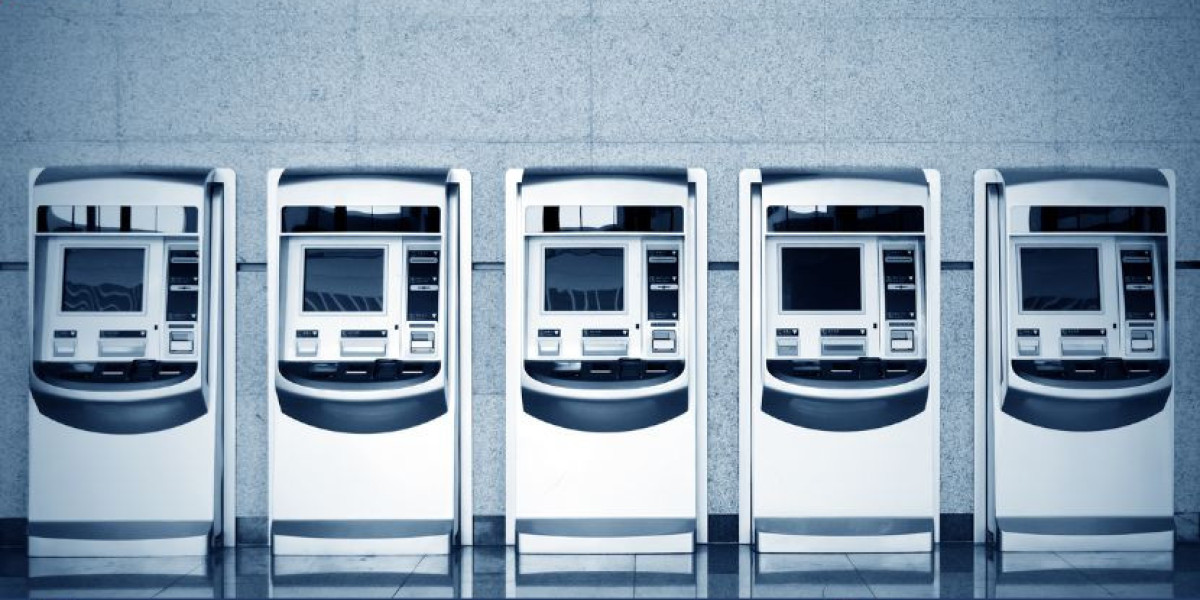The global automatic ticket machine market share is set for significant growth in the coming decade, driven by rapid urbanization, technological advancements, and increased demand for efficient and contactless ticketing systems. The adoption of digital payment solutions, improvements in public transport infrastructure, and the rising number of commuters globally are pushing the market forward.
The market is projected to expand at a CAGR of 11.8% from 2025 to 2034, making automatic ticketing systems an integral part of the modern transportation ecosystem. As cities continue to develop smarter public transport networks, the demand for automated, user-friendly, and high-speed ticketing machines will increase.
This article explores the market dynamics, key drivers, challenges, latest trends, and segment insights, offering a comprehensive overview of the automatic ticket machine market from 2025 to 2034.
Key Drivers of Market Growth
1. Increasing Demand for Contactless Payment and Smart Ticketing
The shift toward contactless payments and digital wallets is a major growth driver for the automatic ticket machine market. Commuters prefer quick and hassle-free ticket purchases using RFID cards, QR codes, and NFC-enabled smartphones. Public transport authorities are integrating cashless solutions to improve efficiency and reduce transaction times.
2. Urbanization and Expansion of Public Transport Infrastructure
Rapid urbanization is increasing the need for smart transportation systems. Governments worldwide are investing in metro rail projects, high-speed trains, and bus rapid transit (BRT) networks, all of which require automated ticketing solutions to streamline passenger flow and reduce congestion.
3. Growth in Air Travel and Railway Networks
The increasing number of air travellers and railway passengers is driving demand for automated self-service ticketing kiosks at airports and train stations. With airports expanding and high-speed rail networks growing, the installation of smart ticketing machines is expected to rise.
4. Integration of AI and IoT in Ticketing Machines
Artificial intelligence (AI) and the Internet of Things (IoT) are improving the efficiency of ticketing systems. AI-powered ticket machines offer personalized travel suggestions, fare calculations, and multilingual support, while IoT integration ensures real-time system monitoring, predictive maintenance, and enhanced security.
5. Government Initiatives for Smart Cities
Smart city projects worldwide are adopting automated ticketing solutions to improve public transport efficiency. Investments in digital ticketing systems and intelligent transport networks are fueling market growth, particularly in Europe, North America, and Asia-Pacific.
Challenges in the Automatic Ticket Machine Market
1. High Initial Investment and Maintenance Costs
The installation of automatic ticketing machines requires significant investment in hardware, software, and system integration. Regular maintenance and software upgrades also add to operational costs, which can be a challenge for developing countries.
2. Security Risks and Cyber Threats
As ticketing machines become more connected, they are vulnerable to cybersecurity risks, hacking attempts, and payment fraud. Ensuring data security, encryption, and compliance with global cybersecurity standards is a major challenge for market players.
3. Limited Internet Connectivity in Some Regions
Automatic ticket machines rely on internet and cloud-based systems for real-time transactions. In areas with poor connectivity, machine performance can be affected, leading to delays and inefficiencies in ticketing services.
4. User Adaptability and Digital Literacy
While smart ticketing is growing, some commuters—especially elderly passengers or those unfamiliar with digital payments—still prefer manual ticketing methods. Public transport operators must ensure user-friendly interfaces and alternative ticketing options for accessibility.
Latest Trends in the Automatic Ticket Machine Market
1. AI-Powered Ticketing and Machine Learning Integration
AI-driven ticket machines are capable of real-time fare adjustments, dynamic pricing, and customer behavior analysis. Machine learning algorithms help predict travel patterns and optimize ticketing operations.
2. Biometric and Facial Recognition-Based Ticketing
The introduction of biometric authentication and facial recognition is enhancing security and passenger convenience. Many transport hubs are testing ticket machines that allow passengers to pay using facial recognition, eliminating the need for physical tickets.
3. Blockchain for Secure and Transparent Ticketing
Blockchain technology is emerging as a secure solution for ticket validation, fraud prevention, and seamless transactions. By recording transactions on an immutable ledger, blockchain improves ticket authenticity and prevents duplication.
4. Smart Card and Mobile Ticketing Integration
Public transport networks are moving towards integrated ticketing solutions that allow passengers to use a single smart card or mobile app for multiple transport modes, including buses, trains, metros, and ferries.
5. Deployment of Green and Energy-Efficient Ticket Machines
Sustainability is becoming a key priority. Manufacturers are focusing on eco-friendly ticketing machines that consume less energy, use recyclable materials, and support paperless ticketing to reduce environmental impact.
Market Segmentation: Key Insights
By Machine Type
- Vending Machines – Used for self-service ticket purchases in transport hubs, shopping centers, and theme parks.
- Kiosk-Based Machines – Integrated with multimodal transport networks for digital payments and smart ticketing.
- Mobile Ticketing Machines – Handheld devices used in buses and event venues for on-the-spot ticket issuance.
By Payment Mode
- Cash-Based Machines – Still in use in developing economies and rural areas.
- Cashless Machines – Widely adopted in urban transit systems using credit cards, digital wallets, and NFC payments.
By End-User
- Public Transport Operators – Metro, railway, and bus networks deploying smart ticketing machines.
- Airports and Airlines – Self-service kiosks for boarding passes and baggage check-ins.
- Entertainment and Events – Used in theme parks, stadiums, and concerts for digital ticketing.
By Region
- North America – Strong adoption due to contactless payment innovations and smart transit systems.
- Europe – Leading in smart city investments and high-speed rail network expansions.
- Asia-Pacific – Rapid growth driven by urbanization, public transport modernization, and government-led smart infrastructure projects.
Future Opportunities in the Automatic Ticket Machine Market
1. Expansion of Smart Ticketing in Developing Markets
Emerging economies in Asia, Africa, and Latin America are investing in modern public transport systems, presenting opportunities for automatic ticketing machine manufacturers.
2. Adoption of AI-Driven Predictive Analytics
Future ticket machines will use big data and predictive analytics to forecast passenger demand, manage ticket pricing, and improve operational efficiency.
3. Integration of Multi-Modal Transportation Systems
As integrated transport networks grow, passengers will be able to use a single ticket for multiple travel modes, creating demand for centralized ticketing solutions.
4. Increased Focus on Cybersecurity and Fraud Prevention
With rising digital transactions, governments and transport agencies will invest in secure payment gateways and encrypted ticketing platforms to prevent hacking and financial fraud.
5. Collaboration Between Public and Private Sector Players
Public transport operators and tech firms are collaborating to develop next-generation ticketing solutions that offer faster, more reliable, and seamless travel experiences.



